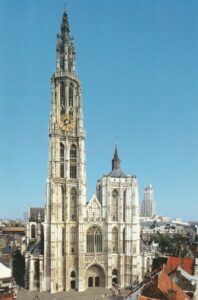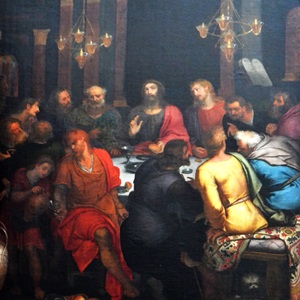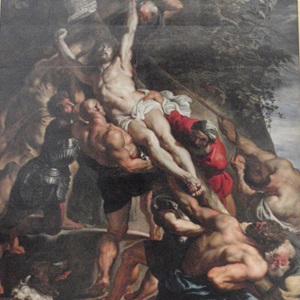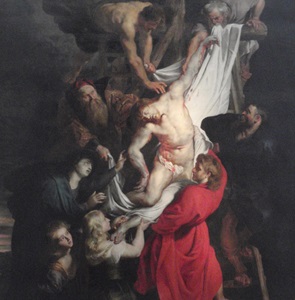Cathedral of Our Lady: the highlights of Peter Paul Rubens

from the Handschoenmart
(Glove Market)
“You shall not make for yourself a graven image, or any likeness of anything that is in heaven above, or that is in the earth beneath…” (Ex 20, 4 and Dt 5, 8)
A twelve-year truce, in the middle of a protracted war: today, many would welcome this. Around 1607, both the troops of the Spanish king, our sovereign, and those of the Republic, our northern neighbours, were physically and financially, exhausted. After difficult negotiations, direct confrontations did not occur between 1609 and 1621 – but no longer than that.
Rubens returned from Italy at the beginning of the truce. Many churches in Antwerp were still empty; they had suffered form the Iconoclasm of 1566 and 1581. Not all guilds had already ordered a new work of art for their altar.
But now, supply and demand find each other. After the Council of Trent (1545-1563), the Baroque imagery is intended to express the triumph of the Catholic Counter-Reformation: it was an investment in visual media. The dramatic techniques of Baroque painting were used to conquer hearts and minds.
However, art had to continue to respect realism, to render human anatomy correctly, and to reproduce the text of the Gospel faithfully. Consider baroque as a dose of panache that is added on top of the humanist ideal of the Renaissance.
We end this tour in the Cathedral of Our Lady, where no less than four original works by Rubens can be admired. They give you a nearly complete overview of his mastery and oeuvre; but first, let’s take a quick look at Otto van Veen’s finest work.




